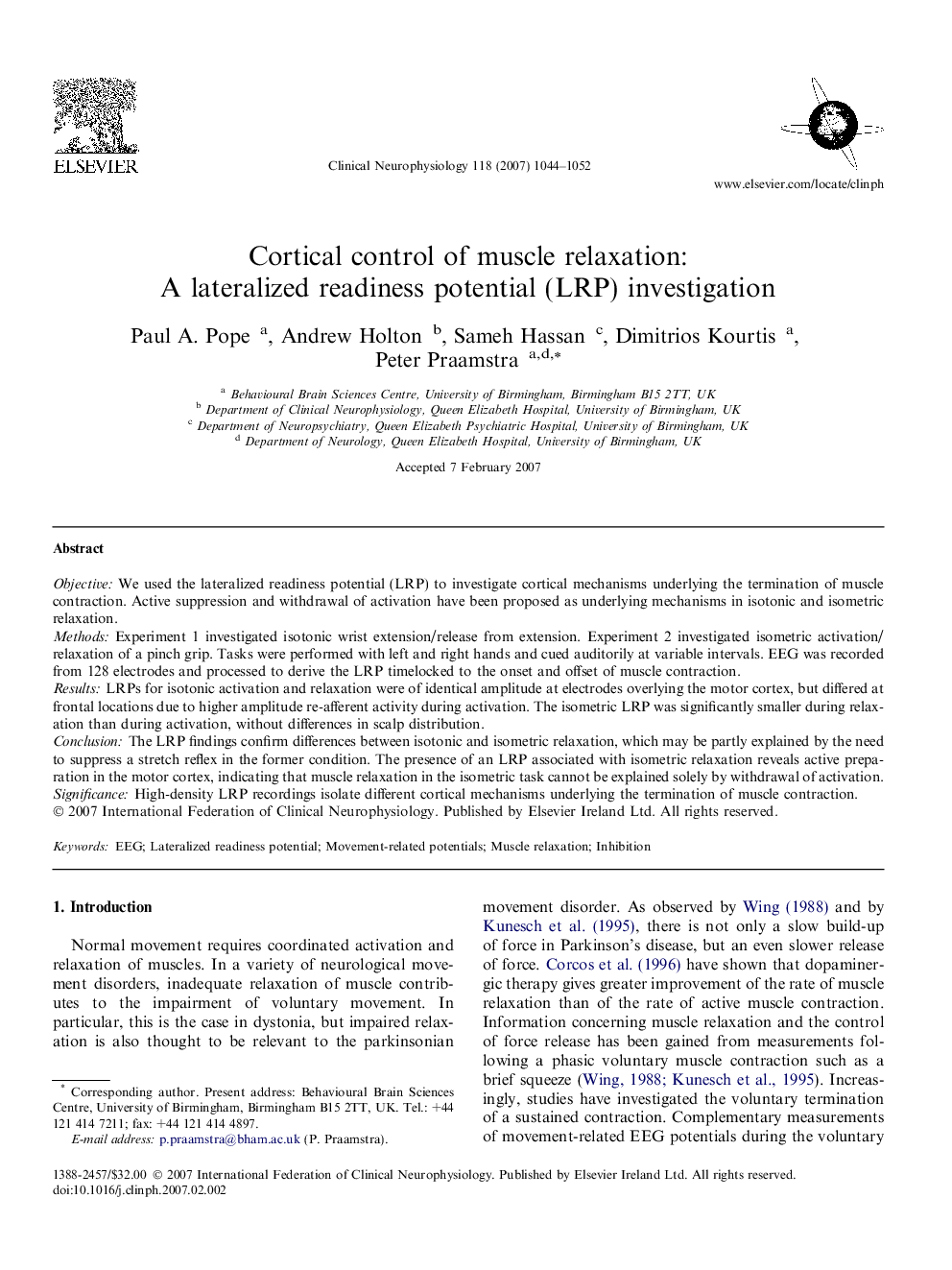| Article ID | Journal | Published Year | Pages | File Type |
|---|---|---|---|---|
| 3048526 | Clinical Neurophysiology | 2007 | 9 Pages |
ObjectiveWe used the lateralized readiness potential (LRP) to investigate cortical mechanisms underlying the termination of muscle contraction. Active suppression and withdrawal of activation have been proposed as underlying mechanisms in isotonic and isometric relaxation.MethodsExperiment 1 investigated isotonic wrist extension/release from extension. Experiment 2 investigated isometric activation/relaxation of a pinch grip. Tasks were performed with left and right hands and cued auditorily at variable intervals. EEG was recorded from 128 electrodes and processed to derive the LRP timelocked to the onset and offset of muscle contraction.ResultsLRPs for isotonic activation and relaxation were of identical amplitude at electrodes overlying the motor cortex, but differed at frontal locations due to higher amplitude re-afferent activity during activation. The isometric LRP was significantly smaller during relaxation than during activation, without differences in scalp distribution.ConclusionThe LRP findings confirm differences between isotonic and isometric relaxation, which may be partly explained by the need to suppress a stretch reflex in the former condition. The presence of an LRP associated with isometric relaxation reveals active preparation in the motor cortex, indicating that muscle relaxation in the isometric task cannot be explained solely by withdrawal of activation.SignificanceHigh-density LRP recordings isolate different cortical mechanisms underlying the termination of muscle contraction.
